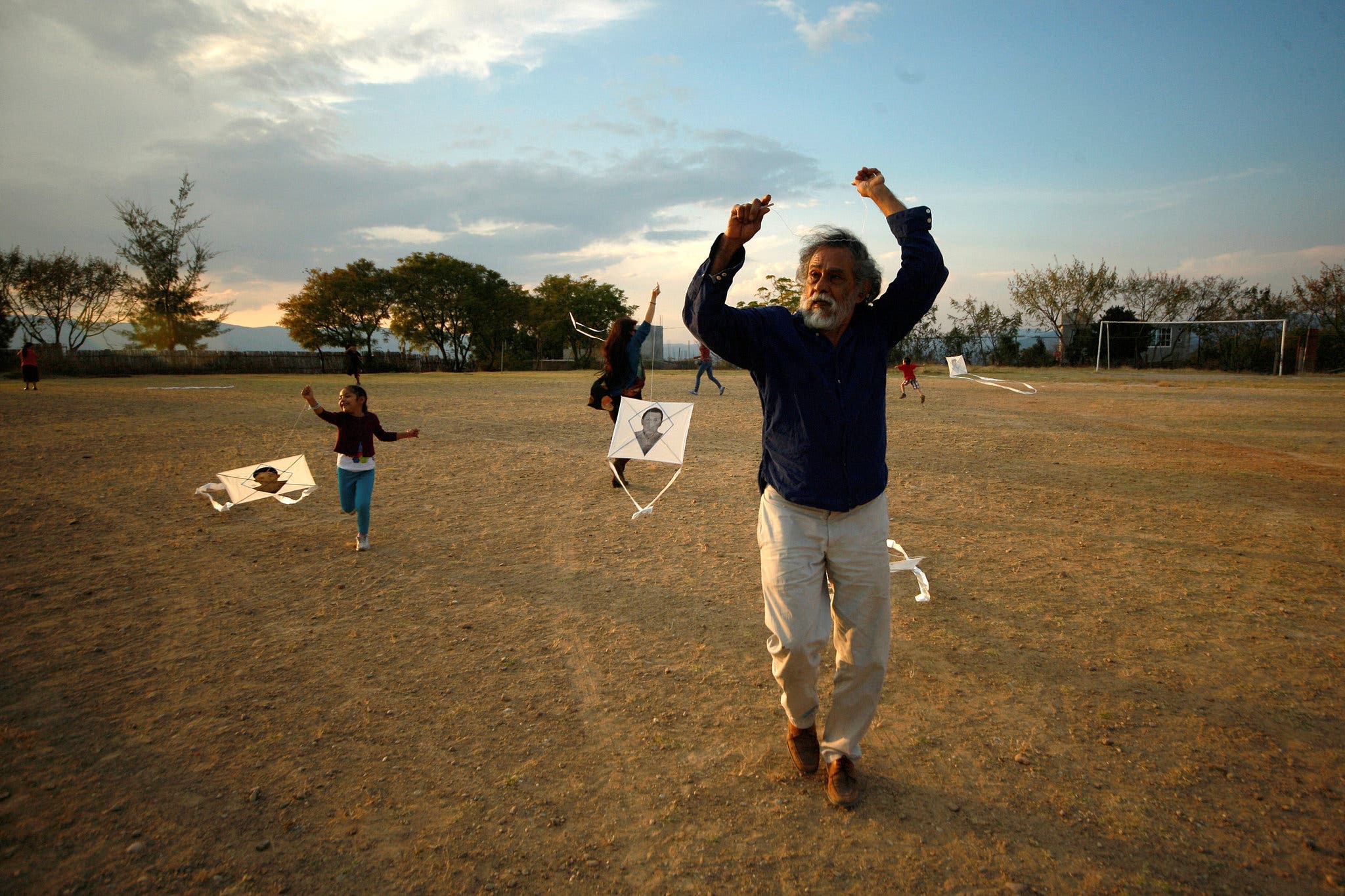Evening the Scales: Felipe Ehrenberg and the Pedagogies of Cooperation
04/04/2022
“Perhaps, among the hundreds who are learning today to work in groups in order to publish, there will emerge those who manage to even the scales between those who speak and those who observe”, Ehrenberg pondered at the end of the same text in which he suggests that educators must lead and accompany the critical process of endlessly analyzing and rewriting that which is inscribed (...)
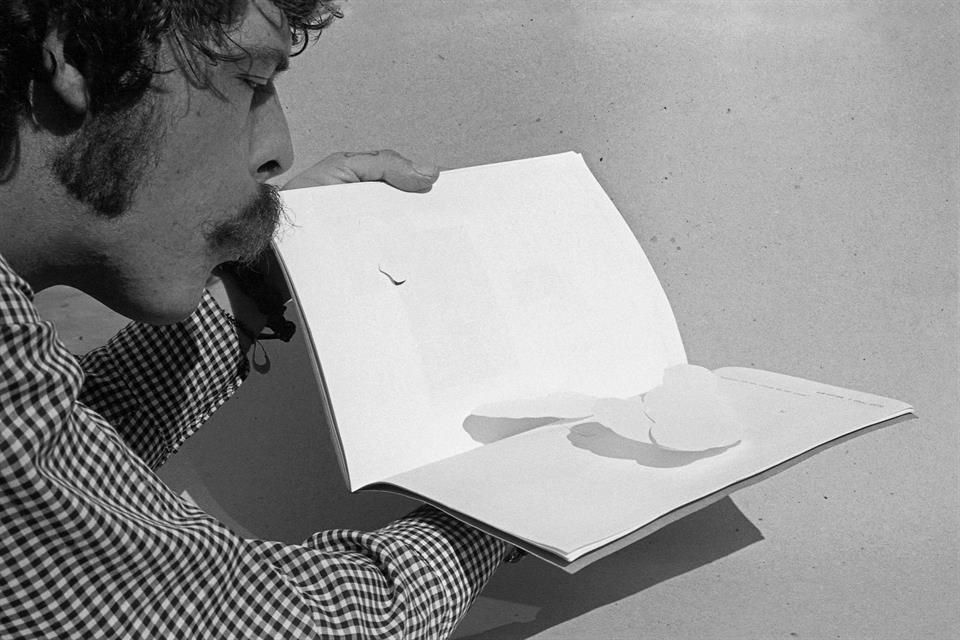
Questioning, improving upon and going beyond the printed word are, according to Felipe Ehrenberg, the duties of the teacher.1 In the early 1980s, Ehrenberg dedicated himself to transmitting this critical function, through different editorial production workshops and among non-specialized circles in Mexico. The core concept he proposed was use of the stencil duplicator or mimeograph, the material result of which –dedicated to the editorial cooperative- would become popularly known as the Manual del editor con huaraches [‘Manual for the Editor in Sandals’].2 In addition to this publication, during the 1980s he produced a number of manuals devoted to mural painting, cultural management, artistic administration, exhibition design and press distribution. These tools contributed to The Art of Living from Art, a course and repository that he gathered into a single volume in the first decade of the new millennium.
During the 1970s and 1980s, in Mexico there was a marked proliferation of production, communication and management manuals developed by artists for use across a broad range of sectors. Pertinent examples include the School of Plastic Arts of the University of Veracruz in Xalapa, or the Monumental Graphics Workshop at the Metropolitan Autonomous University – Xochimilco, in Mexico City. In these institutions, manuals for experimental photography and printing techniques, mimeographing, mural painting and serigraphy were produced.
After returning from England in 1974, Ehrenberg shared a series of editorial tools with different contexts in Mexico. He promoted mimeographing as a method for use in workshops and seminars organized by both artists and non-artists, focusing on the organization of production in both rural and urban areas. The courses placed particular emphasis on the stencil, with the aim of proposing reproduction as a basic principle and a means of potential liberation through the appropriation of the means of production, and also the materialization of a collective effort based on the minimal resources available and within the reach of students.
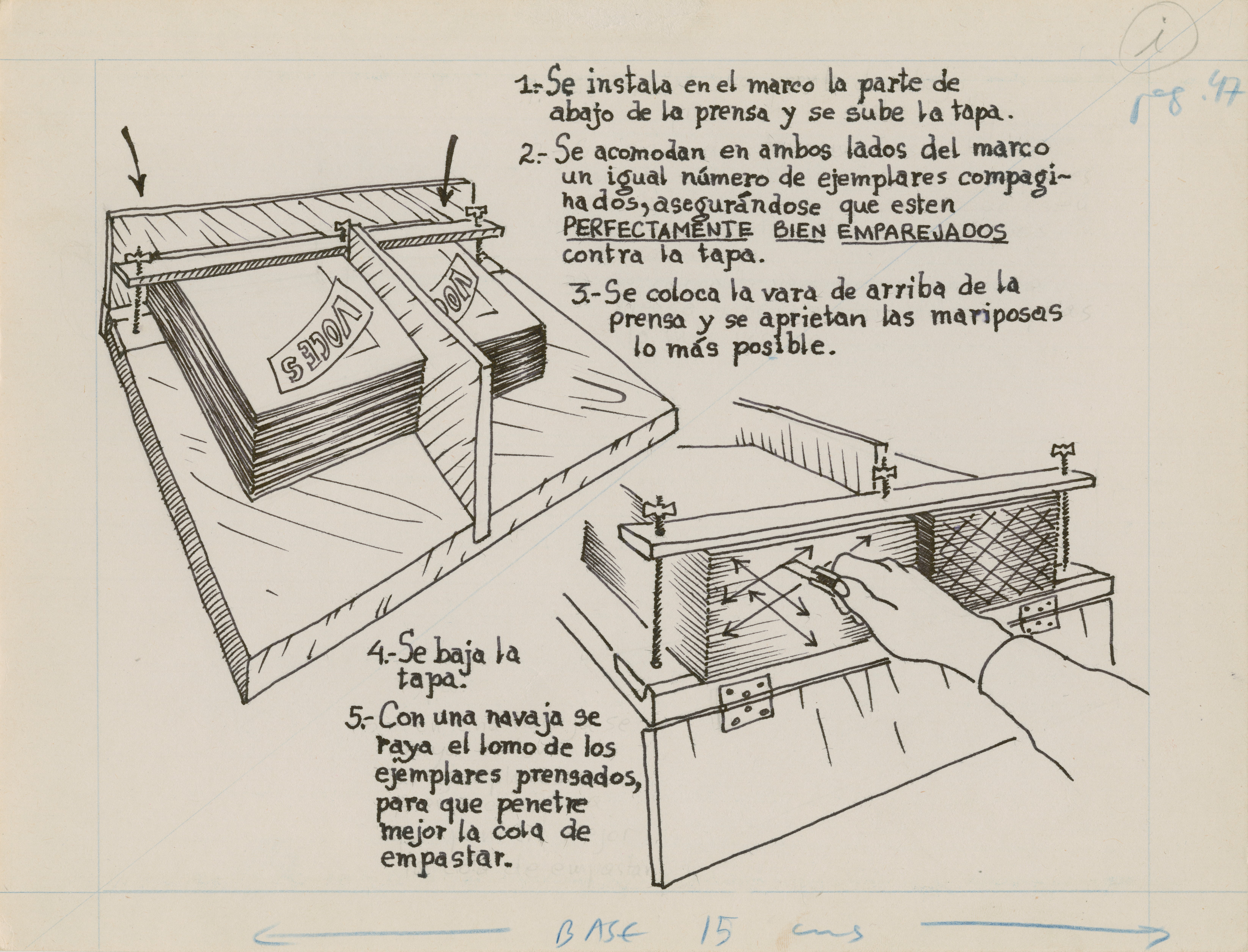


During the 1960s, the work of publishing burst upon the arts as another promise of emancipation from the hegemonic regime composed of exhibition spaces, the art market, and critics. Self-publishing offered the promise of autonomy and flexibility for a diverse group of artists linked to Conceptualism, Fluxus, and the –at the time- wide-reaching network of mail art and artists’ books, which emerged in the northwestern hemisphere and enjoyed particular popularity in Latin America and Eastern Europe.
Although it was cheap and easy to distribute, as a strategy to avoid concessions to the market the artist’s book proved insufficient, since it perpetuated the object-based character of artistic production. According to different critical sources of the period, such publications did nothing to structurally modify the production-circulation relationship. For example, Lucy Lippard warned of their imminent engulfment by the mercantile art system and the limited ability of such publications to circulate beyond a specialized audience, given their hermetic tendencies.3
Nevertheless, Ehrenberg found in the editorial workshop a peculiar power that existed on the soft edges of the field. While during the 1970s he had attempted to challenge the hierarchies within the limits of artistic education (in courses dedicated to producing publications using photocopiers, stamps and mimeographs in art schools in Xalapa, Veracruz and Mexico City), during the outpouring of the 1980s his aim was to breathe life into the notion of collective work among the students of rural teaching schools,4 cultural workers and the curious. The transfer of the tools for artistic work into cooperative-based education functioned as a response to the artistic-political zeitgeist, and the goal of redistributing the materials associated with artists in working class neighborhoods and rural settings. This historic project of disciplinary de-confinement, rather than expanding the field by incorporating other perspectives, performed a kind of twin maneuver: on the one hand, it facilitated access to tools for creativity, communication and organization among diverse actors in the class struggle; and on the other hand, it undermined the social division of labor by inviting everyone and anyone to participate in cultural work, as they would with any other activity. In this way, creation and communication would not be separate activities, but instead complementary aspects of a project that would operate in everyday life.
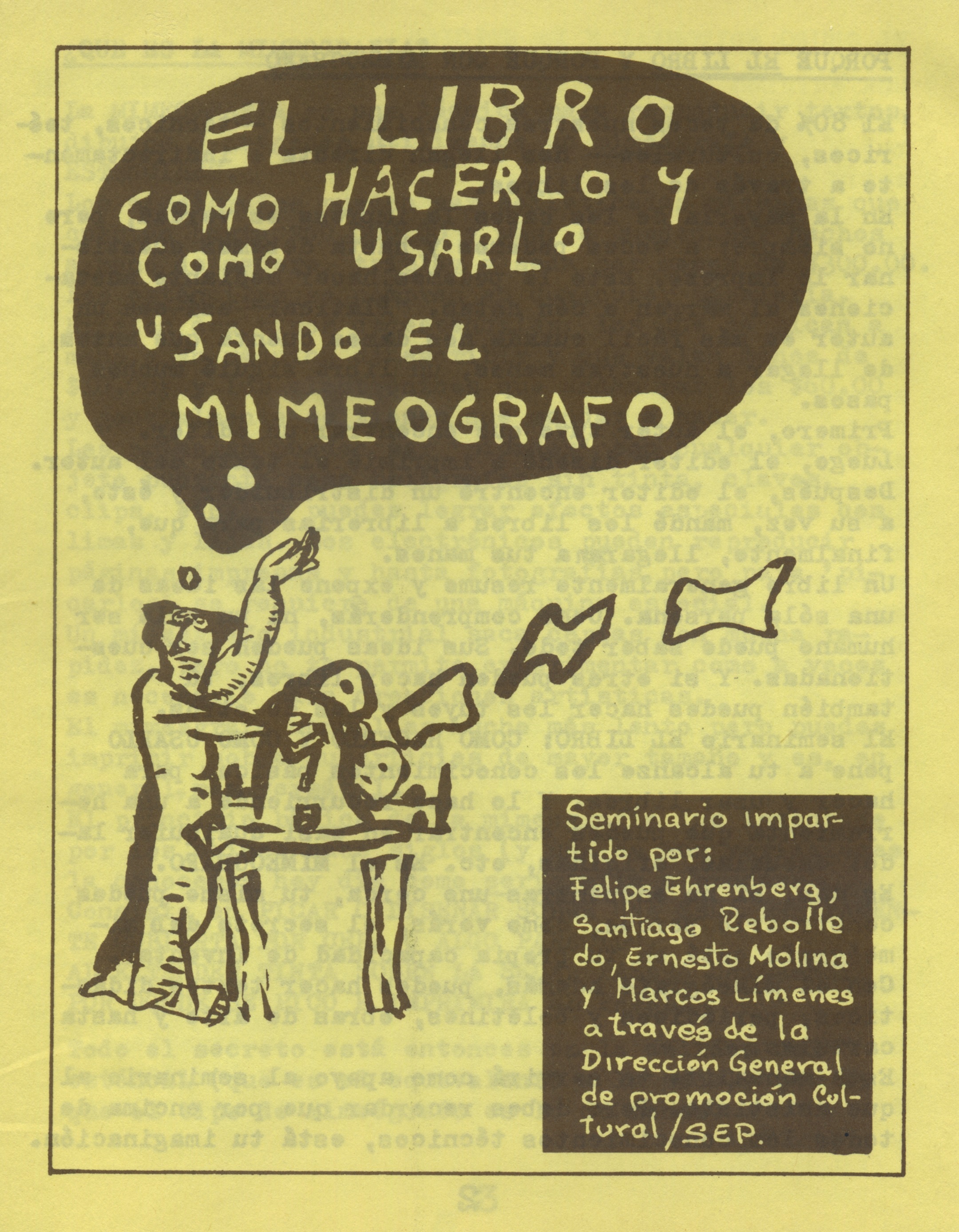
During the 1970s, across the continent cultural workers with left-wing affiliations began sharing techniques of popular theater, graphic art or publishing, in labor, neighborhood and peasant unions, with the aim of undermining the hierarchical order of the artistic world and enacting in the present what was being pursued at the time by political and armed means under the influence of the foco theory of revolution, which was also being practiced in the barrios by artists using their own tools. Examples of this include the popular theater of Augusto Boal, Ricardo Carpani's plastic militancy workshops, or the populist workshop held in Paris during the period of unrest that began in May 1968, conducted by Julio Le Parc, as well as his work with the Groupe de Recherche d'Art Visuel (GRAV).
Ehrenberg concocted strategies for artistic professionalization and management, editing and printing through initiatives in formal and informal education, oriented more towards anarcho-syndicalism than the revolutionary spirit radiating from Cuba.5 Following the triumph of the Sandinista National Liberation Front in Nicaragua, in 1979, Ehrenberg proposed a program of mimeographed publishing in the country, in order to connect those searching for loved ones, or to facilitate networks for the exchange of food and medicines during the process of national reconstruction. The project never materialized; however, it did result in intensive work during the early 1980s in Mexico, beginning in the Escuelas Normales Rurales and spreading to a number of cultural venues run by the Institute for Social Security and Services for State Workers (ISSSTE).6
The ‘Manual for Editors in Sandals’ is the informal name given to a small pamphlet that he produced as part of the Haltos 2 Ornos (H2O) Communication Workshops, together with Marcos Límenes, Ernesto Molina and Santiago Rebolledo, around the notion of editorial cooperativism as an exemplary exercise in collective work. In this endeavor, what is important is not the specific technological tool (the machine), since the ‘editor in sandals’ is an agent of the productive organization that holds reproducibility and organization as its exemplary principles. During the 1970s, the media entered the artistic-political debate, due to the theoretical attention being paid to education and the media as spaces for discussion, as well as the proliferation of cheap photocopying and duplicating equipment. These not only brought the possibility of producing one’s own means of communication, but also of subverting —albeit temporarily— the limitations imposed by copyright on the circulation of diverse types of content, a goal which Mexican artists were keen to pursue.7
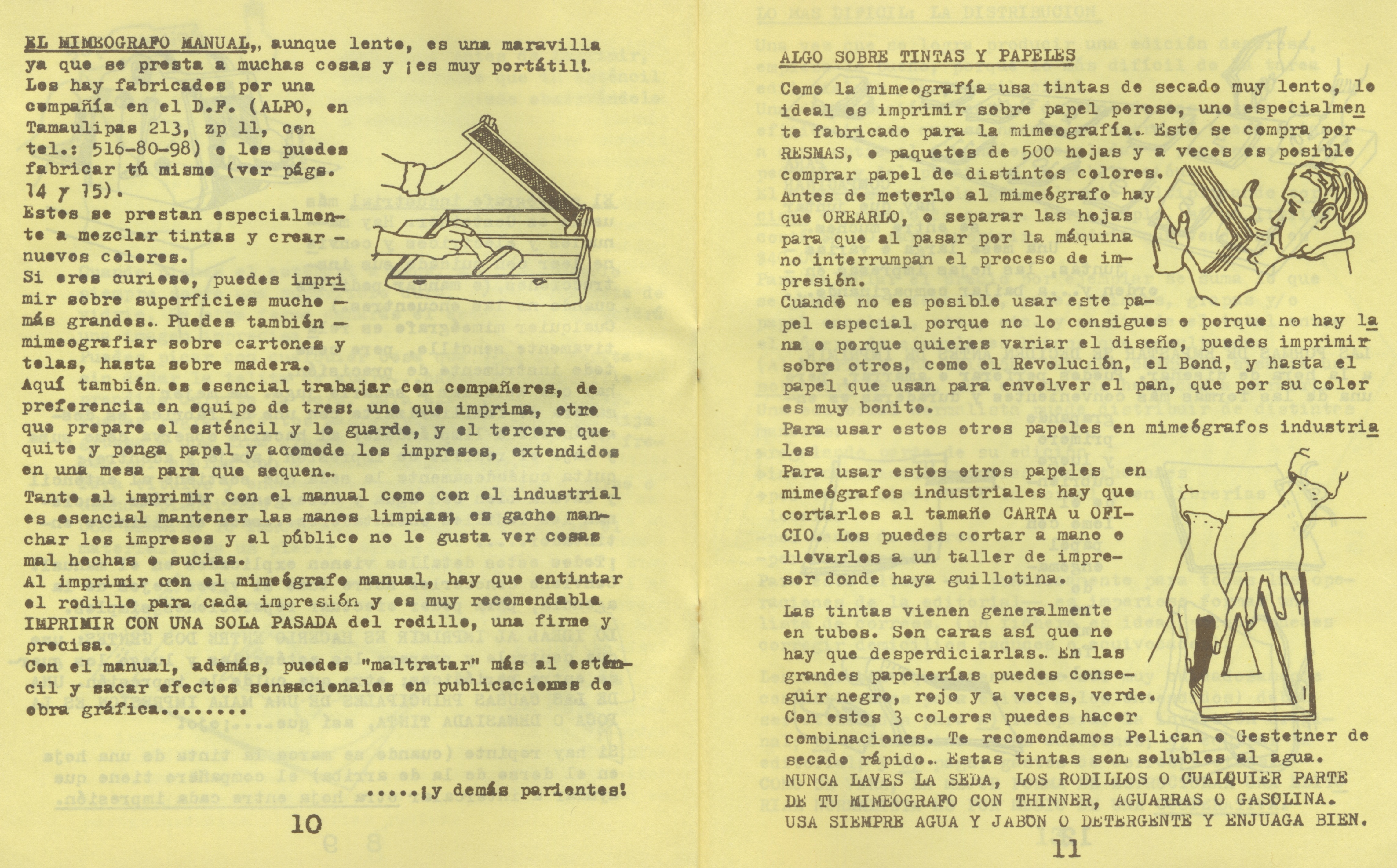

Following the post-revolutionary agrarian reform in Mexico, cooperativism and work in school kitchen gardens became an important part of the principles of rural and working class education.8 The school press was added to the pedagogical repertoire, under the influence of the work of individuals such as Celestin Freinet and Otto Niemann, who contributed to the critical pedagogies being called for since the end of the sixties in the south through Paulo Freire's conscientious dialogic project. The program proposed by the ‘editor in sandals’ established commonalities with these emancipatory projects from a pragmatic libertarian perspective, which at the same time challenged the authoritarianism of both the revolutionary vanguard and the institutional hierarchy, while contributing to the repertoire of popular education projects in the south.9
“Perhaps, among the hundreds who are learning today to work in groups in order to publish, there will emerge those who manage to even the scales between those who speak and those who comply,"10 wrote Ehrenberg at the end of the same text in which he suggests that teachers must lead and accompany the critical process of endlessly analyzing and rewriting that which is inscribed. Thus, he summarizes the ‘editor in sandals’ project, in which the driving forces are collective work and public presentation.
Although they rely on different graphic reproduction tools, both the courses and the brief manual call for the making of the actual mimeograph machine –which Ehrenberg and his colleagues called pinocho- based on the basic model proposed by Edison at the end of the 19th century. This simple device consists of an organza mesh mounted on a wooden drawer which serves as a support for stencils, which at that time were available in any stationery store. A rubber roller that can be made from a piece of hose and a section cut from a wooden walking stick, as well as ink, which can be made from ashes and body lotion, complete the basic instruments required.
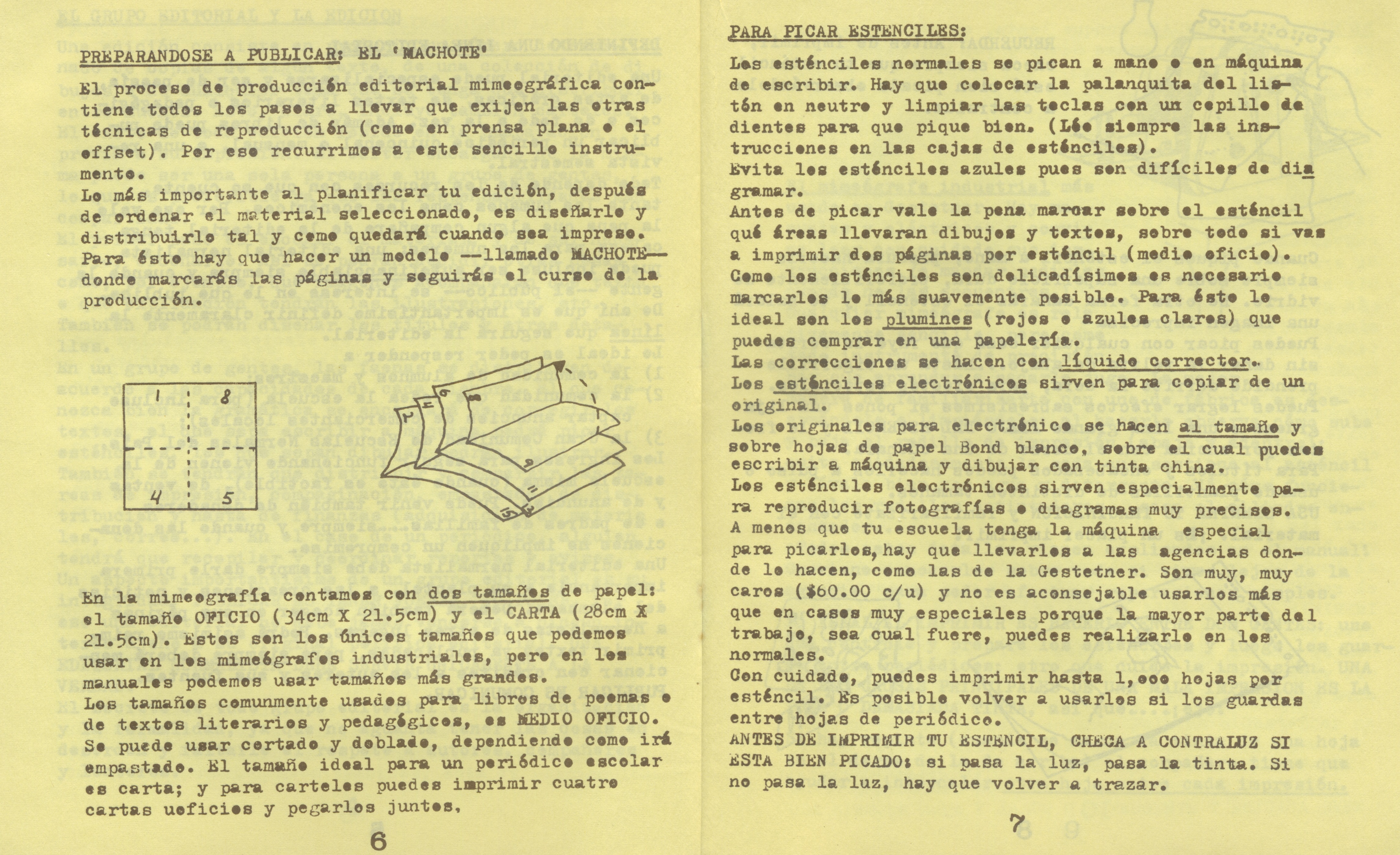

The ‘editor in sandals’ is particularly insistent when it comes to the organizational structure, which indicated that roles be assigned according to ability, while placing emphasis on the financial administration and sustainability of the editorial group, on its formalization through the celebration of a public event and the signing of a constitutive act, on the reusing of underutilized spaces and tools in schools, and a distribution strategy coupled with the circulation of a periodical promoting the ongoing work of the publishing house. Streamlining of resources, organization, communication and professionalization resulted in a series of flexible media applicable to a variety of contexts and circumstances not necessarily associated with printed publications or media production.
The organization of the editorial workshop proposed by Ehrenberg echoes the principles of cooperative organization: open and voluntary membership, active participation in defining policies and decision-making, equitable economic participation, distribution of surpluses among all members, agreements with other organizations through the democratic election of members, ongoing access to education and training tools, promotion of local, trans-local, regional and international networks, and the sustainable development of the community.11
Despite their relatively recent reincorporation into the resources of graphics, the fanzine and desktop publishing, tools such as the mimeograph or the stencil duplicator can be considered obsolete today. However, although the editorial workshop now employs a wide array of physical and digital resources, its social and political dynamics remain focused on the same processes: editing, proofreading, translation, design, printing, binding, distribution and discussion. If, perhaps, those closest to the art world have embraced more closely the world of the art market, those more focused on a strategic circulation in the service of political action have tended to rely upon digital media or hybrid platforms in order to achieve greater reach.
What can we learn now from the manual? The ‘editor in sandals’ placed at the forefront the organization's goals, economic sustainability and the promotion of mutual solidarity networks. This goes beyond a merely discursive search for horizontal relationships, since it calls for an organizational structure of no use in the co-optation of tertiary mercantile structures. The distribution network of publishers that H2O proved unable to set in motion, contributes nevertheless to the repertoire of those other trans-local social networks for the exchange of information and tools, based upon peer relationships rather than the prevailing client-server relationships of today. To these characteristics we can add the emphasis on the basic conceptual principles of reproducibility over specific techniques or tools, which potentially and conceptually call for flexibility in the use of resources. Communication is determined to be the main goal, and, rather than the rudimentary techniques employed, it is the circulation and potential for dialogic agitation of the reproduced materials that is relevant.
Lastly, in terms of the unintentional consequences of the ‘editor in sandals’, it is perhaps important to highlight how, during the early 1980s, H2O paved the way for technical-poetic innovations that helped to significantly reorganize activity within and –most notably- beyond the world of the arts. These provoked a de-confinement of production not governed by the economies of visibility. That is a victory in itself, and it invites us to question how we can, today, rely upon tools that are incapable of being co-opted or having the flexibility to operate in autonomous networks of co-production of meaning, in order to defend the liberation of creative power around localized poetics of the reproduction of life, beyond mere commerce.
